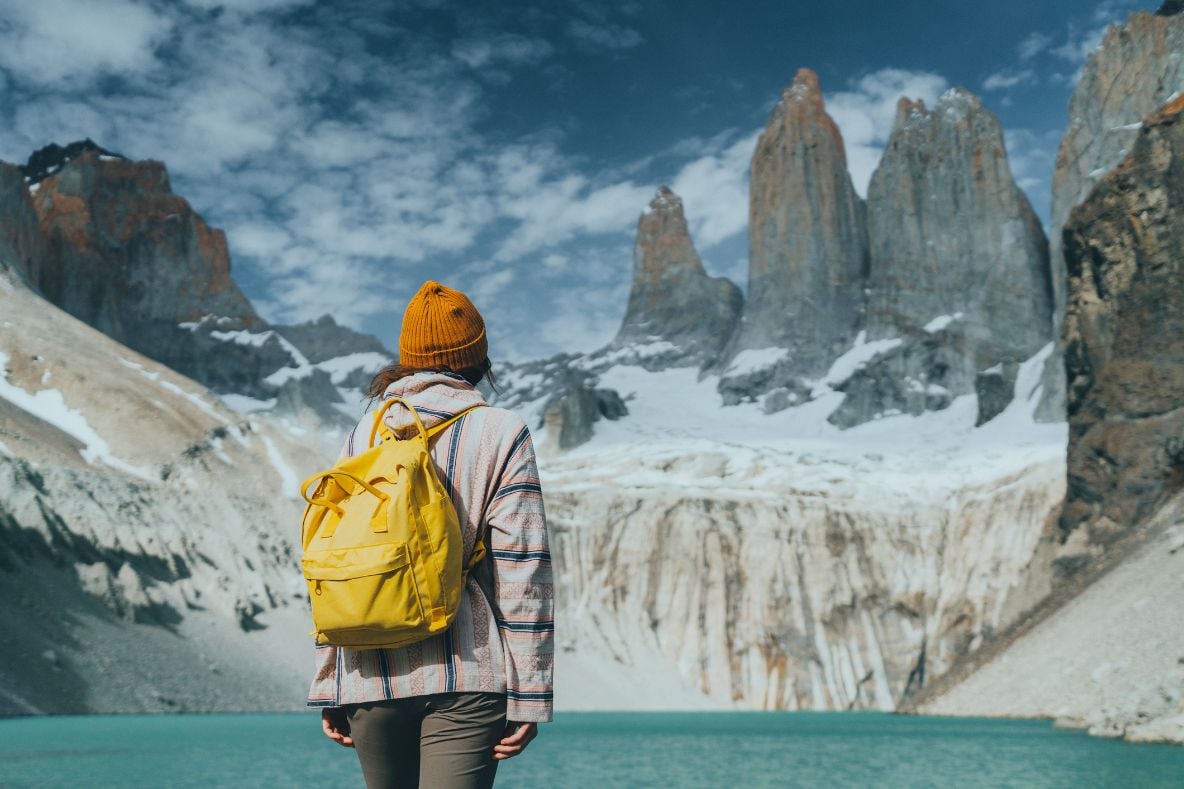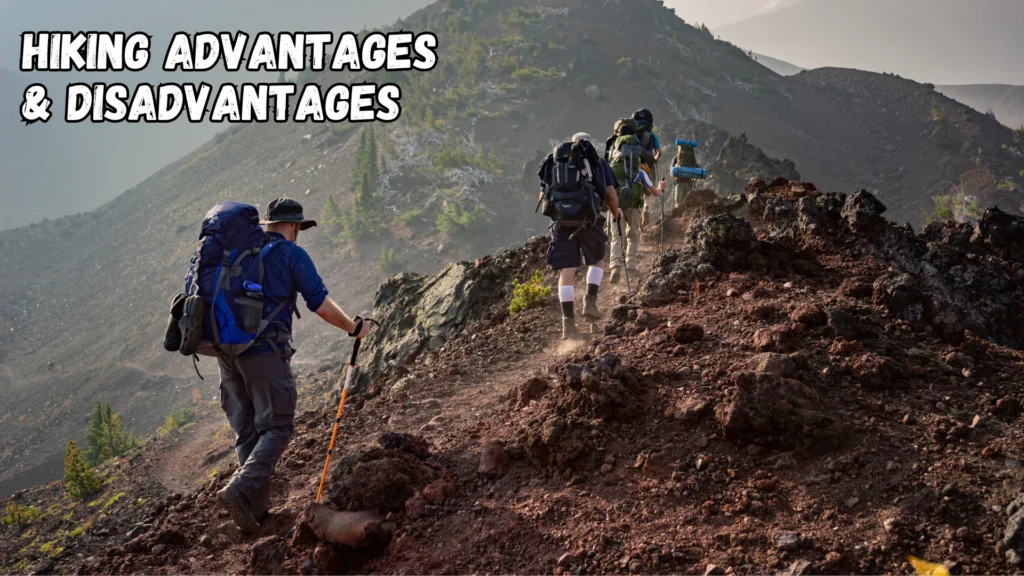Looking for a guide to hiking in Torres del Paine, Patagonia? This article will give you all the information needed to plan an unforgettable hiking experience in this stunning region.
Torres del Paine National Park in Patagonia is a hiker’s paradise, offering breathtaking landscapes, diverse wildlife, and a variety of trails for hikers of all levels. Whether you’re a seasoned trekker or a beginner, there’s something for everyone in this UNESCO Biosphere Reserve.
From the iconic W trek to the challenging circuit around the Paine massif, this guide will cover the essential details, including trail options, camping facilities, weather considerations, and tips for a safe and enjoyable hiking adventure in Torres del Paine Patagonia. So, lace up your boots and get ready to explore one of the most awe-inspiring hiking destinations in the world.

Credit: www.muchbetteradventures.com
2. Planning Your Trip
For a successful hiking adventure in Torres Del Paine, proper planning is essential. Here’s what you need to consider before embarking on your journey:
- Best Time to Visit: Visit during spring and autumn for the best weather.
- Choosing the Right Route: Match your hiking route to your fitness level for an enjoyable trek.
- Permits and Regulations: Always obtain permits to protect the environment.
2.1 Best Time To Visit
The best time to visit Torres Del Paine for hiking is during the shoulder seasons of spring and autumn.
2.2 Choosing The Right Hiking Route
Consider your fitness level and experience when selecting a hiking route in Torres Del Paine to ensure an enjoyable and safe trek.
2.3 Permits And Regulations
Obtaining permits and adhering to regulations is crucial for hiking in Torres Del Paine to protect the environment and ensure preservation of the natural beauty.
3. Essential Gear
When embarking on a hiking adventure in Torres Del Paine Patagonia, having the right gear is crucial for a safe and enjoyable experience. Here are the essential items you’ll need to pack:
- Clothing & Footwear: Layered clothing and sturdy hiking boots are key.
- Backpack & Gear Checklist: A supportive backpack, water bottle, and navigation tools are essential.
- Camping Equipment: Pack a tent, sleeping bag, and a camping stove.
3.1 Clothing And Footwear
- Layers: Pack clothing items in layers to adjust to changing weather conditions.
- Waterproof Jacket: Protect yourself from wind and rain with a durable waterproof jacket.
- Hiking Boots: Wear sturdy, comfortable hiking boots for long treks.
3.2 Backpack And Gear Checklist
- Backpack: Choose a backpack with proper support and capacity for all your gear.
- Water Bottle: Stay hydrated with a durable water bottle or hydration system.
- Navigation Tools: Bring a map, compass, or GPS device to stay on track.
3.3 Camping Equipment
| Item | Description |
|---|---|
| Tent | Provide shelter for overnight camping. |
| Sleeping Bag | Keep you warm and comfortable during the night. |
| Camping Stove | Cook meals and boil water for drinking. |
4. Training And Fitness
Explore a comprehensive guide to hiking in Torres Del Paine, Patagonia. Discover training and fitness tips tailored for this challenging adventure, including strength and endurance exercises, and essential gear recommendations to prepare for the rugged terrain and varying weather conditions.
Are you planning to embark on a memorable hiking adventure in Torres Del Paine Patagonia? To fully enjoy the stunning landscapes and conquer the challenging trails, it is essential to be adequately prepared both physically and mentally. This section will guide you through the necessary training and fitness regimen that will help you make the most out of your hike.
- Endurance Training: Incorporate cardiovascular exercises like jogging or cycling into your routine.
- Strength Training: Squats, lunges, and planks can help you tackle the rugged terrain.
4.1 Preparing For The Hike
Before hitting the trails, it is crucial to prepare your body for the demanding trekking experience that awaits you. Start by gradually increasing your aerobic activity, such as jogging or brisk walking, to improve your cardiovascular fitness. Incorporate stair climbing into your routine, as this will simulate the uphill sections of the hike and strengthen your leg muscles. Remember to allow for sufficient rest between training sessions to aid in recovery.
4.2 Building Endurance
Endurance is key when it comes to successfully completing your hiking journey in Torres Del Paine. To build endurance, focus on prolonged cardiovascular exercises, such as cycling or swimming, that elevate your heart rate and keep it elevated for an extended period. Aim for at least 30 minutes of moderate to intense aerobic activity, 3-4 times a week. Gradually increase the duration and intensity of your workouts to challenge your endurance limits.
4.3 Strength And Conditioning Exercises
In addition to cardiovascular fitness, it is important to improve your strength and conditioning to tackle the rugged terrains of Torres Del Paine. Incorporate the following exercises into your training routine to strengthen your muscles and enhance overall stability:
1. Squats: Stand with your feet shoulder-width apart, lower your body by bending your knees, and return to the starting position. Repeat for 10-15 reps.
2. Lunges: Step forward with one foot and lower your body until the front knee is at a 90-degree angle. Return to the starting position and repeat with the other leg. Aim for 10-15 reps on each leg.
3. Plank: Assume a push-up position with your elbows directly beneath your shoulders, engage your core muscles, and hold the position for as long as possible. Start with shorter durations and gradually increase the time as you progress.
4. Step-ups: Use a sturdy step or bench, place one foot on the elevated surface, and step up while keeping your back straight. Step back down and switch legs. Aim for 10-15 step-ups on each leg.
Remember to perform these exercises with proper form and gradually increase the intensity as your fitness improves. Adding resistance bands or weights can further enhance the effectiveness of these exercises. By following a well-rounded training and fitness program, you will adequately prepare your body for the challenges of hiking in Torres Del Paine. Remember to listen to your body, pace yourself, and enjoy the incredible scenery that awaits you on this unforgettable adventure.

Credit: www.andreaference.com
5. Safety And Emergency Preparedness
When embarking on a hiking adventure in the breathtaking wilderness of Torres Del Paine in Patagonia, prioritizing safety and emergency preparedness is paramount. Being equipped with essential knowledge and resources ensures a secure and enjoyable experience amidst the stunning yet unpredictable terrain of this natural wonder. Here are some crucial aspects of safety and emergency preparedness that every hiker should consider:
5.1 Wilderness Safety Guidelines
Before setting foot on the trails of Torres Del Paine, it is essential to familiarize yourself with wilderness safety guidelines. Stay aware of your surroundings and wildlife, follow marked trails, and adhere to any park regulations. Always let someone know your itinerary and carry a see-through map to avoid getting lost. Respecting the environment and being mindful of weather conditions are also crucial for a safe hiking experience.
5.2 Navigation Skills
Having proficient navigation skills can be a lifesaver when exploring the vast wilderness of Torres Del Paine. Familiarize yourself with topographic maps and learn how to use a compass. Consider taking a GPS device or smartphone with a reliable mapping app as a backup. Stay oriented at all times and be prepared to adjust your route based on changing terrain and weather conditions.
5.3 First Aid Kit Essentials
Carrying a well-equipped first aid kit is imperative for any hiking trip, particularly in remote areas such as Torres Del Paine. Include essentials such as bandages, disinfectant, medication, and emergency supplies. Additionally, ensure you are familiar with basic first aid procedures to address common injuries like blisters, cuts, or minor burns. Regularly check and replace expired items to maintain the effectiveness of your first aid kit.
6. Hiking Tips And Techniques
Embarking on a hike in Torres Del Paine requires proper preparation and knowledge of hiking tips and techniques. From navigating the trails to climbing steep terrain, mastering these essential skills will ensure a safe and enjoyable hiking experience. And follow proper hiking etiquette, learn how to navigate with trail markers, and practice climbing techniques for steep terrain.
6.1 Proper Hiking Etiquette
Showing respect for nature and fellow hikers is crucial when hiking in Torres Del Paine. Follow these etiquette guidelines:
- Stay on designated trails to protect the fragile ecosystem.
- Yield to uphill hikers and keep noise levels to a minimum.
- Properly dispose of trash and leave no trace of your visit.
6.2 Navigation And Trail Markers
Navigating the vast wilderness of Torres Del Paine requires attention to trail markers and directional cues:
- Carry a detailed map and compass for backup navigation.
- Follow trail markers such as cairns or colored flags diligently.
- Pay attention to landmarks and natural features to stay on course.
6.3 Techniques For Climbing Steep Terrain
Climbing steep terrain in Torres Del Paine demands proper technique and safety precautions:
- Use trekking poles for stability and to reduce strain on your knees.
- Take small, deliberate steps and maintain a steady pace uphill.
- Keep your center of gravity low and distribute weight evenly to prevent slipping.

Check On Amazon
7. Wildlife And Environmental Considerations
Explore the comprehensive guide to hiking in Torres Del Paine, Patagonia, delving into the crucial factors of wildlife and environmental considerations. Gain insights on how to responsibly navigate the stunning landscapes while preserving the delicate ecosystem and encountering the diverse wildlife.
Torres Del Paine Patagonia is renowned for its stunning landscapes and diverse wildlife. As an eco-conscious hiker, it is essential to understand the significance of wildlife and environmental considerations. By respecting the natural habitat, practicing Leave No Trace principles, and taking advantage of birdwatching opportunities, you can fully appreciate the beauty of Torres Del Paine while minimizing your impact on the ecosystem.
Respect the wildlife by keeping your distance and following Leave No Trace principles to protect the park’s ecosystem.
7.1 Respecting Wildlife And Habitat
Respecting the wildlife and habitat in Torres Del Paine is crucial for the preservation of its delicate ecosystem. Here are a few guidelines to ensure you maintain a safe distance while observing the incredible fauna: – Avoid approaching or feeding animals; they are best admired from afar. – Keep noise levels to a minimum to avoid disturbing the animals and their natural behavior. – Never attempt to touch, harass, or capture any wildlife, as this can disrupt their daily routines and cause stress.
7.2 Leave No Trace Principles
When hiking in Torres Del Paine, adhering to Leave No Trace principles is paramount to protect the environment. These guidelines help to minimize human impact: – Pack out all your trash and dispose of it properly in designated areas. – Stay on designated trails to avoid trampling delicate vegetation. – Respect campsite boundaries and avoid creating new ones. – Practice proper hygiene by using biodegradable soaps and disposing of wastewater away from water sources.
7.3 Birdwatching Opportunities
Torres Del Paine is a birdwatcher’s paradise, offering sightings of numerous species. Whether you are a devoted ornithologist or simply appreciate the beauty of birds, here are a few locations you should visit: – Lake Pehoe: Home to black-necked swans, condors, and various duck species. – Lake Grey: Look out for the South American tern and the Andean condor. – Laguna Azul: Observe the Andean goose, cinereous harrier, and black-chested buzzard-eagle. While birdwatching, ensure you maintain a respectful distance and use binoculars or a zoom lens to avoid disturbing the birds and their habitats. By following these wildlife and environmental considerations, you can contribute to the preservation of the unique ecosystem in Torres Del Paine. Respect the wildlife, practice Leave No Trace principles, and relish the extraordinary birdwatching opportunities this magnificent destination has to offer.
8. Capturing The Experience
In Torres Del Paine Patagonia, capturing the essence of your hiking expedition is essential to preserve the memories for a lifetime. Capture the breathtaking beauty of Torres del Paine through photography or journaling. Documenting your hike helps preserve memories of this incredible adventure.
8.1 Photography Tips
Photography plays a crucial role in immortalizing the stunning landscapes and wildlife of Torres Del Paine. Utilize natural light efficiently for vibrant photos.
- Focus on capturing both wide-angle panoramas and close-up shots of details.
- Experiment with different angles and perspectives to enhance your images.
- Capture early morning and sunset shots for spectacular lighting.
8.2 Journaling And Sketching
Journaling and sketching provide a unique way to capture personal experiences and emotions during your hikes in Torres Del Paine.
- Reflect on your daily adventures and jot down notable moments.
- Create quick sketches of the scenery, plants, and animals you encounter.
- Sketching can serve as a therapeutic activity and preserve memories in a creative way.
8.3 Documenting Flora And Fauna
Documenting the diverse flora and fauna of Torres Del Paine allows you to appreciate the unique biodiversity of the region.
- Identify and record different plant species along the trails.
- Observe and photograph wildlife encounters with respect and caution.
- Create a catalogue of the remarkable flora and fauna encounters during your hikes.
Torres Del Paine Patagonia offers breathtaking scenery and exhilarating hiking trails. Whether you’re a seasoned hiker or a beginner looking for an adventure, this destination has something for everyone. From the towering granite peaks to the pristine lakes and vast glaciers, this national park will leave you in awe.
So lace up your boots, embrace the challenge, and embark on a journey of a lifetime in Torres Del Paine Patagonia.
FAQs:
Do You Need A Guide To Hike Torres Del Paine?
Yes, a guide is highly recommended for hiking Torres del Paine due to its challenging trails and unpredictable weather. A guide can ensure your safety, provide information about the park, and enhance your overall experience.
Can You Hike Patagonia Without A Guide?
Yes, you can hike Patagonia without a guide. Just make sure to be well-prepared and have proper equipment.
What Are The Best Months To Hike Torres Del Paine?
The best months to hike Torres del Paine are from December to March due to favorable weather.
What Is The Most Famous Hike In Torres Del Paine?
The most famous hike in Torres del Paine is the “W Trek,” known for its stunning landscapes, including the Grey Glacier and the iconic Three Towers. This challenging trek covers around 50 miles over 4-5 days and is a must for nature enthusiasts.



